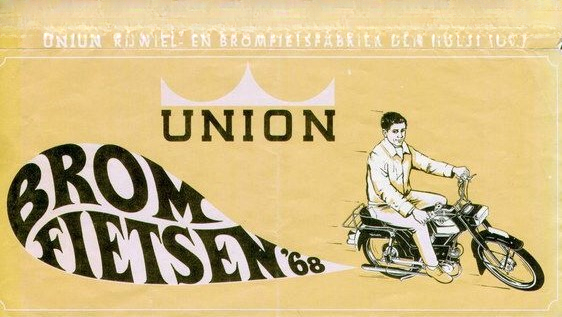Union Bromfiets: The Forgotten Legacy of The Union Moped Brand
The article explores the forgotten legacy of the Union moped brand, tracing its origins back to 1904 when it transitioned from sewing machines and bicycles to producing renowned mopeds. Union's commitment to innovation and design excellence in the 1950s led to the creation of iconic models like the Union Boomerang and Roulette. The brand's diverse portfolio and cultural significance are highlighted, emphasizing its enduring appeal among collectors and enthusiasts.
UNIONNETHERLANDS1940'S
3/25/20242 min read


Union Bromfiets: The Forgotten Legacy of The Union Moped Brand
Introduction
The Union brand, synonymous with quality and design, holds a venerable position in the history of Dutch mopeds. Beginning as a modest venture, Union quickly ascended to become an emblem of Dutch ingenuity and craftsmanship in the two-wheeled vehicle industry. This article explores the storied journey of Union mopeds, uncovering the legacy of a brand that has traversed over a century, combining innovation with tradition.
The Dawn of Union
Union's inception in 1904 by B.J. van den Berg in Den Hulst, near Nieuwleusen, marked the beginning of a legacy grounded in the pursuit of excellence. Initially a purveyor of sewing machines, ironwares, and bicycles, Union's foray into the realm of mopeds in 1950 revolutionized its product lineup. This bold move signified Union's commitment to innovation, expanding its horizons beyond traditional bicycles.
The Rise of the Moped
The 1950s heralded a new era for Union with the launch of its own moped models. Despite not manufacturing the motor blocks in-house, Union's mopeds gained acclaim for their reliability and aesthetic appeal. The 1960 model, in particular, stood as a testament to years of experience and collaboration with design specialists, offering a blend of performance and elegance.
A Diverse Offering
Over the years, Union introduced an array of moped models catering to various consumer preferences. From the iconic Union Boomerang in 1967 to the Roulette, Tourist, Sport-o-matic, and Roulet-o-matic, the brand's diverse portfolio underscored its adaptability and understanding of market demands.
Heritage and Pride
Beyond mere transportation, Union mopeds represent a cherished part of Dutch cultural heritage. Museums like Palthehof and tours through scenic locales such as the Vechtdal celebrate the enduring allure of these vehicles. The Nieuwleusen museum, home to the last models produced until the 1970s, illustrates the profound sense of local pride associated with this historic brand.
Conclusion
Union mopeds are not merely vehicles but symbols of a bygone era of Dutch industrial prowess. Their enduring appeal among collectors and enthusiasts alike speaks to the timeless nature of Union's designs. As we reflect on Union's contribution to the Dutch cultural and industrial landscape, it's clear that the legacy of Union mopeds will continue to inspire and captivate for generations to come.
